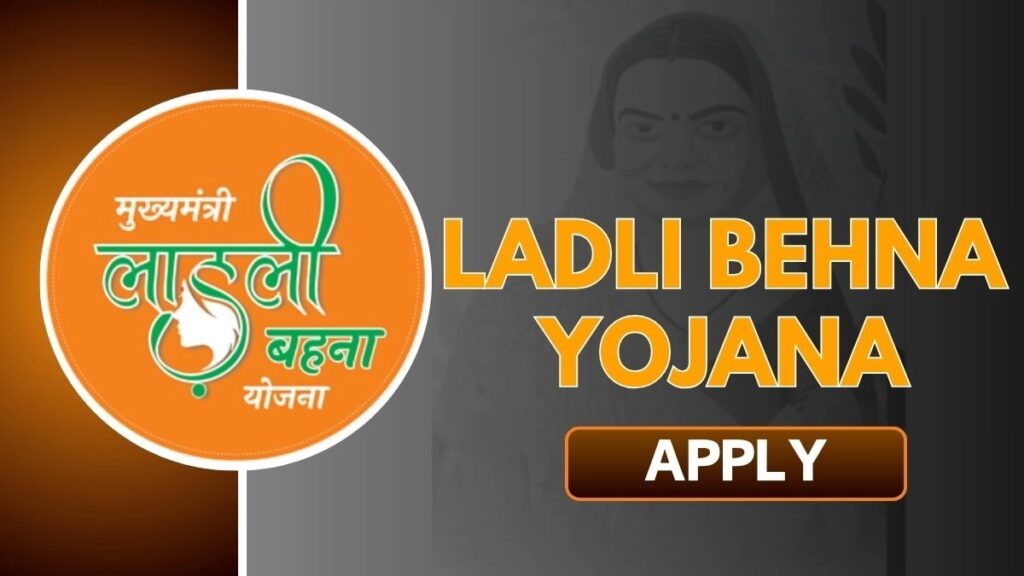In recent years, governments across India have introduced several welfare schemes aimed at improving the lives of women and children. One such initiative is the Chief Minister Ladli Behna Yojana, a flagship scheme designed to uplift and empower women through financial and social support. This initiative is targeted primarily at women from economically weaker sections of society, providing them with much-needed resources and opportunities to build a better future for themselves and their families.
This article delves into the various aspects of the Chief Minister Ladli Behna Yojana, its objectives, benefits, and the impact it has had on the lives of women since its inception.
Table of Contents
Objectives of the Chief Minister Ladli Behna Yojana
The Chief Minister Ladli Behna Yojana is a government program introduced with the objective of empowering women and reducing gender disparity. The primary goals of this scheme are:
- Financial empowerment: To provide financial assistance to women from low-income families, thereby enabling them to meet essential needs and enhance their standard of living.
- Gender equality: To promote gender equality by supporting women in achieving social and economic independence.
- Education and skill development: Encouraging women to pursue education and skill development opportunities, thereby improving their employability.
- Health and well-being: Promoting the health and well-being of women by providing funds that can be used for healthcare and other necessities.
- Reduction of economic stress: Offering financial relief to families, particularly in rural areas, where women often bear the brunt of poverty.
Key Features of the Ladli Behna Yojana
1. Direct Financial Assistance
One of the most significant features of the Ladli Behna Yojana is the provision of direct financial assistance to eligible women. Under this scheme, the government transfers a fixed amount of money to the bank accounts of women belonging to economically weaker sections. This financial aid helps women cover their daily expenses, such as food, healthcare, education for their children, and other necessities.
2. Focus on Rural Women
While the Ladli Behna Yojana benefits women across different regions, it places a particular emphasis on rural women. Many women in rural areas face greater challenges in accessing education, healthcare, and employment opportunities. By providing financial support to these women, the scheme aims to bridge the gap between urban and rural areas and uplift rural women who are often marginalized in terms of resources and opportunities.
3. Eligibility Criteria
To benefit from the Ladli Behna Yojana, women must meet certain eligibility criteria. These include:
- Residency: The applicant must be a permanent resident of the state where the scheme is implemented.
- Age: The scheme is typically aimed at women aged 18 to 60 years.
- Income: The applicant’s family income must fall below a certain threshold, as specified by the state government.
- Marital Status: Women who are married, divorced, widowed, or separated are eligible for the scheme.
- Bank Account: Beneficiaries must have an active bank account to receive the financial assistance through direct transfer.
4. Application Process
The application process for the Ladli Behna Yojana is designed to be straightforward and accessible, particularly for women in rural areas. The steps generally include:
- Filling the application form: Applicants need to submit a detailed application form, which can be obtained from designated government offices or online portals.
- Document verification: Applicants must submit supporting documents, such as proof of income, residency, and age, along with the application form.
- Approval and fund transfer: Once the application is approved, the beneficiary receives the financial aid directly in her bank account.
5. Regular Monitoring and Evaluation
To ensure the scheme’s effectiveness, the Ladli Behna Yojana involves regular monitoring and evaluation. This helps to identify any issues or bottlenecks in the implementation process and make necessary improvements. Additionally, the government conducts periodic surveys to assess the impact of the scheme on the beneficiaries’ lives, helping to ensure that the intended outcomes are achieved.
Benefits of the Ladli Behna Yojana
1. Economic Stability
The most immediate benefit of the Ladli Behna Yojana is the economic stability it provides to women from low-income families. By receiving direct financial aid, these women can better manage their household expenses, pay for their children’s education, and invest in healthcare. This financial security is a significant step towards improving the overall well-being of these families.
2. Empowerment and Independence
The financial support provided through the scheme helps women become more independent and self-reliant. With access to their own funds, women can make important decisions regarding their health, education, and the future of their children. This independence fosters a sense of empowerment and boosts their confidence in managing their own lives.
3. Educational Opportunities
In many families, financial constraints often prevent women from pursuing education or skill development programs. The Ladli Behna Yojana helps bridge this gap by providing women with the resources they need to pursue further education or vocational training, which in turn improves their employability and opens up more opportunities for personal and professional growth.
4. Better Healthcare
The funds provided through the scheme can also be used for healthcare expenses, ensuring that women and their families have access to quality medical care. This is especially crucial in rural areas, where access to healthcare services can be limited. The scheme, therefore, contributes to improving the overall health and well-being of women.
5. Reduction of Poverty
By offering financial assistance to women, the Ladli Behna Yojana directly contributes to poverty reduction in economically weaker sections. With access to funds, women can better manage their household finances, improve their living conditions, and invest in the education and health of their children, helping to break the cycle of poverty in the long term.
Challenges in the Implementation of Ladli Behna Yojana
1. Lack of Awareness
One of the major challenges in the implementation of the Ladli Behna Yojana is the lack of awareness among women, particularly in rural areas. Many eligible women are unaware of the scheme’s existence or do not know how to apply for the benefits. To address this issue, the government needs to conduct extensive awareness campaigns and provide information about the scheme at the grassroots level.
2. Inadequate Infrastructure
In some regions, particularly remote and rural areas, the lack of adequate infrastructure poses a challenge to the effective implementation of the scheme. Issues such as poor internet connectivity, lack of government offices, and transportation problems can make it difficult for women to access the necessary resources to apply for the scheme.
3. Delays in Fund Disbursement
Another challenge is the delay in the disbursement of funds to beneficiaries. This can occur due to administrative issues, delays in document verification, or technical problems. Ensuring a streamlined process and improving the efficiency of fund transfers can help overcome this issue.
4. Social and Cultural Barriers
In some communities, traditional gender roles and social norms may prevent women from seeking financial assistance or pursuing education and skill development. Addressing these social and cultural barriers is crucial to the success of the scheme and to the overall empowerment of women.
The Future of Ladli Behna Yojana
The Ladli Behna Yojana holds tremendous potential to transform the lives of women across the country. As the scheme continues to be implemented and refined, it is essential to address the challenges and ensure that the benefits reach all eligible women. By doing so, the government can further its mission of empowering women, promoting gender equality, and reducing poverty.
Expanding the Reach
To ensure that the Ladli Behna Yojana reaches more women, the government may consider expanding the eligibility criteria and increasing the financial assistance provided. Additionally, more efforts should be made to reach remote areas, where women may be most in need of support but are least likely to have access to the scheme.
Focus on Long-Term Impact
While providing immediate financial assistance is crucial, the Ladli Behna Yojana should also focus on creating long-term impact. This can be achieved by promoting skill development, vocational training, and entrepreneurship among women. By equipping women with the skills they need to earn a livelihood, the scheme can help ensure that they continue to experience economic independence and growth even after the financial aid ends.
Conclusion
The Chief Minister Ladli Behna Yojana is a powerful initiative aimed at empowering women and improving their socio-economic status. By providing financial assistance, encouraging education, and promoting healthcare, the scheme offers a lifeline to women from economically weaker sections, helping them build a better future for themselves and their families. Although challenges remain in its implementation, the scheme has already made a significant positive impact, and with continued efforts, it can play a vital role in advancing gender equality and reducing poverty in India.


